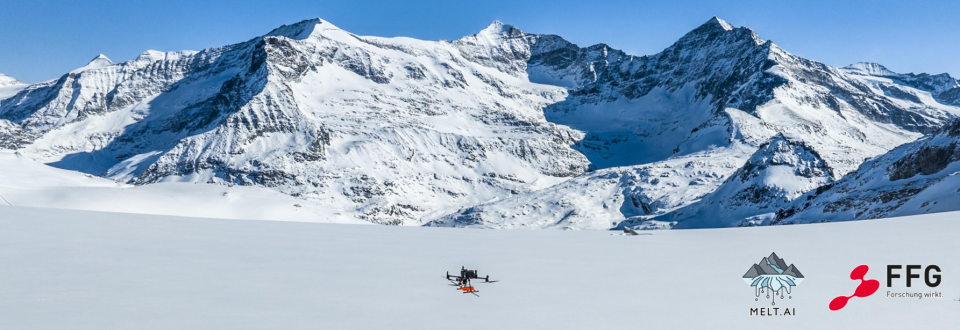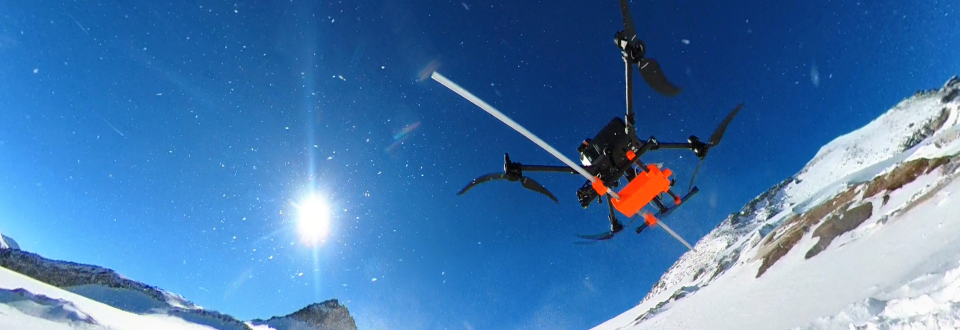PROJECT MELT.AI
Measuring Glacier Ice Loss Through AI-enhanced UAV-borne GPR
This research project focuses on developing innovative monitoring approaches to investigate the dynamics of alpine glaciers in the context of climate change. Alpine regions are particularly affected by climatic shifts, with glaciers serving not only as critical freshwater reservoirs but also as sensitive indicators of climate evolution. However, current scientific capabilities show considerable deficits in comprehensively assessing ice thickness and subglacial structures, as conventional ground-based measurement methods are time-consuming and often hazardous. The integration of drone technology with geophysical methods and AI-driven analysis presents a promising avenue for improving efficiency and precision in data acquisition.
The goal of this doctoral project is to develop an AI-supported model that enables detailed and spatially extensive assessment of ice thickness and subglacial topography. The project uses UAV-based ground-penetrating radar (GPR), photogrammetry, as well as webcam and satellite data. AI techniques such as machine learning and computer vision enable structured analysis of large and heterogeneous datasets. This combination facilitates the detailed investigation of intraglacial melt channels and the modeling of past and future glacier extents. The project addresses key research questions related to volume, area, and morphology changes in glaciers and the interactions between surface and subglacial melting.
A core innovation of the project lies in the first high-resolution, glacier-wide application of UAV-borne GPR technology. Previous approaches have been limited to point-based measurements, whereas this project aims to collect thousands of high-precision data points per glacier—establishing a new standard in glacier monitoring. Complementary AI methods for data fusion and pattern recognition are employed to improve the understanding of previously unknown glacier dynamics and processes. By integrating these advanced technologies into glacier process modeling, the project generates robust forecasts of future developments and delivers valuable insights for scientific research as well as actionable knowledge for policymakers, infrastructure operators, and energy providers.
Furthermore, the project contributes to ecological sustainability through resource-efficient drone operations, significantly reducing the need for conventional helicopter missions. It offers scalable solutions for monitoring alpine regions and supports long-term climate adaptation strategies. The funding enables extensive data collection, training of complex AI algorithms, and presentation of results at international conferences. Through its interdisciplinary and technology-driven approach, this project makes a substantial contribution to advancing glacier monitoring and supporting the adaptation of alpine regions to climate change.



